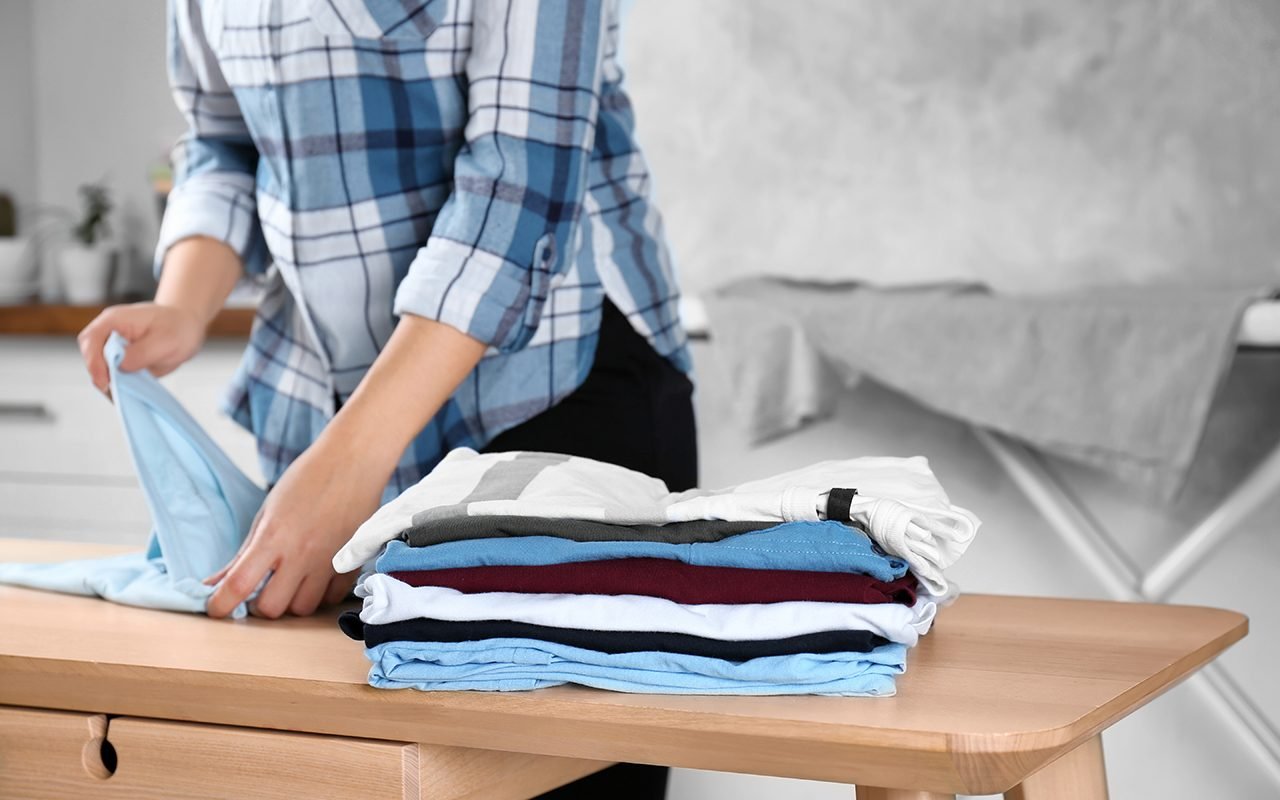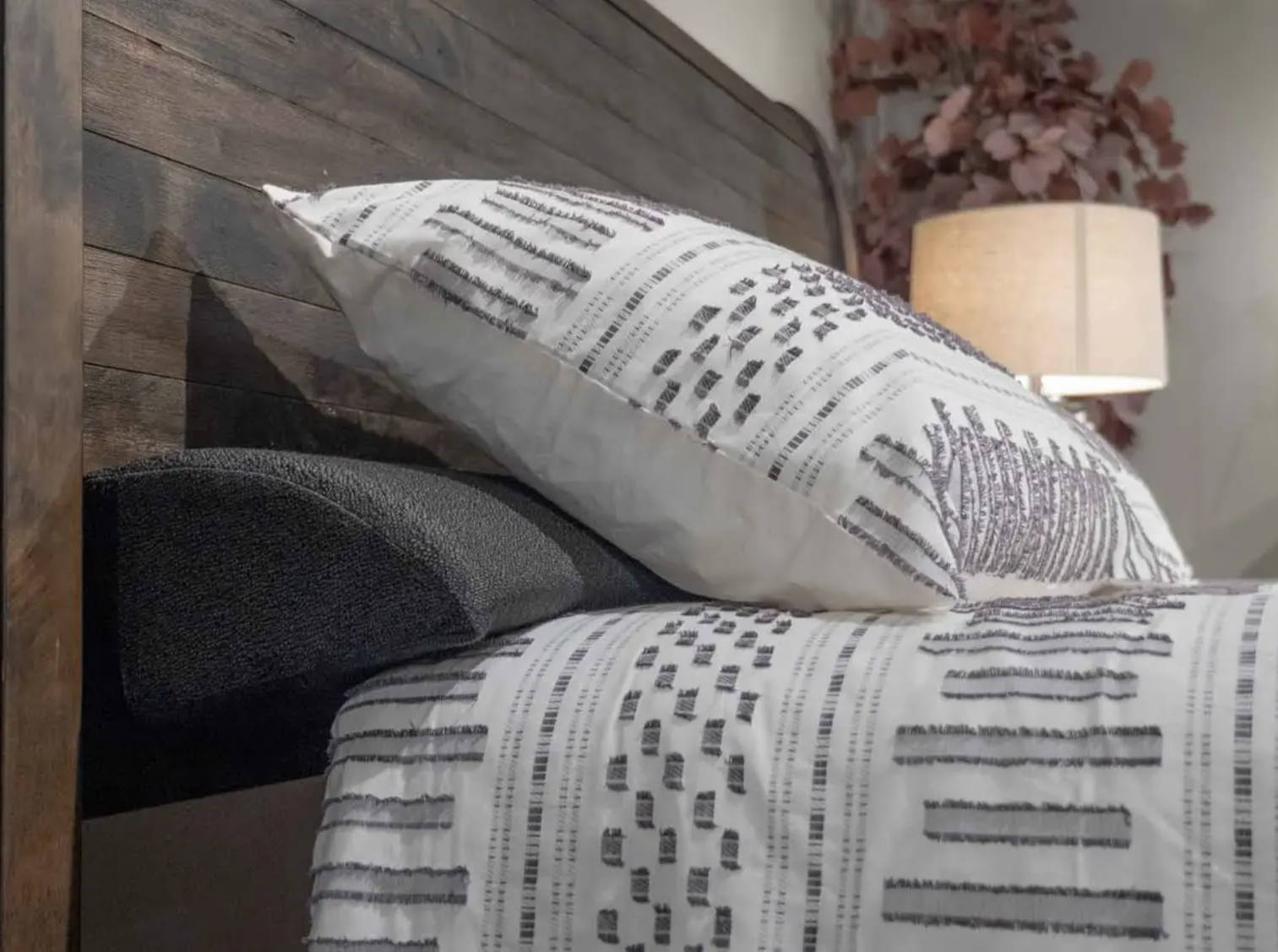Home>Interior Design>My Grandmother’s 5 Laundry Lessons Finally Stopped Me Ruining My Clothes, Towels And Bedding


Interior Design
My Grandmother’s 5 Laundry Lessons Finally Stopped Me Ruining My Clothes, Towels And Bedding
Modified: August 23, 2024
Learn valuable interior design lessons from my grandmother and never ruin your clothes, towels, and bedding again. Discover 5 laundry tips that will save you time and protect your favorite fabrics.
(Many of the links in this article redirect to a specific reviewed product. Your purchase of these products through affiliate links helps to generate commission for Storables.com, at no extra cost. Learn more)
Introduction
Doing the laundry may seem like a mundane task, but it holds the secret to preserving the lifespan and quality of your clothes, towels, and bedding. Growing up, I used to dread this chore and often found myself ruining garments with colors bleeding or fabrics becoming damaged. It wasn’t until I started following my grandmother’s tried-and-true laundry lessons that I finally mastered the art of laundering without mishaps.
In this article, I will share my grandmother’s top five laundry lessons that have transformed my laundry routine. These lessons encompass everything from sorting clothes properly to selecting the right laundry detergent, avoiding common mistakes, maximizing washing machine efficiency, and properly drying and ironing clothes. By following these lessons, you too can ensure that your favorite wardrobe items and home textiles stay in pristine condition.
Key Takeaways:
- Master the art of laundry with these 5 timeless lessons from my grandmother. From sorting clothes to selecting the right detergent, these tips will keep your garments in pristine condition.
- Say goodbye to laundry mishaps and ruined clothes by following these valuable lessons. Proper sorting, detergent selection, and machine efficiency are key to maintaining your wardrobe’s longevity.
Lesson 1: Sorting clothes properly
One of the fundamental laundry lessons my grandmother taught me was the importance of sorting clothes properly. This involves understanding fabric types and separating garments based on color and level of dirtiness.
Firstly, it’s crucial to consider the fabric types of your clothing. Different fabrics require different care, and washing them together can lead to damage or fading. For example, delicate fabrics like silk or lace should be washed separately from sturdy fabrics like denim or cotton. Sorting clothes based on fabric type ensures that each garment receives the appropriate care it needs.
Secondly, sorting clothes by color is vital in preventing color bleeding and preserving the brightness of your garments. Whites should be washed separately from darks and bright colors to avoid color transfer. In addition, washing heavily soiled clothes separately from lightly soiled ones helps to prevent dirt or stain particles from transferring onto cleaner clothes.
By taking the time to sort your laundry properly, you’ll not only protect your clothing from potential damage but also achieve better cleaning results. It may seem like an extra step, but it’s well worth the effort in the long run.
Lesson 2: Selecting the right laundry detergent
Choosing the right laundry detergent is essential for maintaining the quality and longevity of your garments. My grandmother emphasized the importance of considering fabric care labels and selecting the appropriate detergent for different types of clothing.
Fabric care labels provide valuable information about how to best care for your garments. Pay close attention to the recommended washing instructions, including the water temperature and type of detergent to use. For example, delicate fabrics often require a gentle or hand wash cycle with a mild detergent, while heavily soiled items may benefit from a stronger detergent and a warm or hot water setting.
In addition to following fabric care labels, it’s crucial to choose a detergent that suits the specific needs of your clothing. There are various types of laundry detergents available, each designed for specific purposes. For instance, hypoallergenic detergents are ideal for individuals with sensitive skin, while detergents with enzymes are effective at breaking down tough stains.
When selecting a detergent, consider whether you prefer liquid, powder, or pod form. Liquid detergents are versatile and work well in standard and high-efficiency washing machines. Powder detergents are great for heavily soiled loads and can be more cost-effective. Pods offer convenience but may not be suitable for all types of washing machines.
Remember to read the instructions on the detergent packaging and measure the appropriate amount for each load. Using too much detergent can lead to residue buildup and may require additional rinsing, while using too little may result in insufficient cleaning.
By considering fabric care labels and choosing the right laundry detergent, you can ensure that your clothes are cleaned effectively and with care, extending their lifespan and preserving their appearance.
Lesson 3: Avoiding common laundry mistakes
When it comes to doing laundry, there are common mistakes that many people unknowingly make. To avoid these pitfalls and keep your clothes in excellent condition, my grandmother shared three important laundry lessons: using the correct water temperature, utilizing proper stain removal techniques, and preventing excessive shrinking or stretching.
Using the correct water temperature is essential for effective cleaning and preventing damage to your garments. Hot water is ideal for whites and heavily soiled items, as it helps to remove stains and kill bacteria. Warm water works well for most colors and everyday clothing. On the other hand, cold water is suitable for delicate fabrics and clothing that may shrink or bleed colors. By following the fabric care labels and selecting the appropriate water temperature, you can ensure that your clothes are cleaned thoroughly without compromising their integrity.
Stains are inevitable, but removing them properly is crucial to preserving the appearance of your garments. Different stains require different treatment methods, so it’s essential to identify the stain type before attempting to remove it. For example, protein-based stains like blood or grass should be soaked in cold water before washing, while oil-based stains may require pre-treatment with a stain remover or detergent. Remember to blot the stain gently instead of rubbing, as rubbing can spread the stain and damage the fabric fibers. By using the right stain removal techniques, you can increase the chances of successfully removing stains and avoid causing further damage.
Excessive shrinking or stretching of clothes is a common laundry mishap that can be prevented with proper care. To avoid shrinking, it’s essential to follow the fabric care labels and wash items in cool or cold water. It’s also helpful to avoid using the dryer for clothing that is prone to shrinking and instead opt for air drying. On the other hand, stretching can be prevented by avoiding wringing or twisting clothes excessively when removing them from the washing machine. Gently reshape the garments and lay them flat to dry to maintain their original shape and size.
By being mindful of these common laundry mistakes and following my grandmother’s advice, you can ensure that your clothes are cleaned effectively and preserved in their best condition.
Always separate your laundry into similar colors and fabrics to prevent color bleeding and damage. Use the appropriate water temperature and detergent for each load to maintain the quality of your clothes, towels, and bedding.
Lesson 4: Maximizing the efficiency of the washing machine
Having a properly functioning washing machine is essential for getting clean and fresh clothes. To maximize its efficiency and ensure optimal cleaning results, my grandmother taught me two key laundry lessons: loading clothes correctly and adjusting water levels and cycles based on the load size.
When loading clothes into the washing machine, it’s important to distribute the weight evenly. Overloading the machine can lead to poor cleaning and may cause strain on the machine’s motor and components. On the other hand, underloading the machine can be a waste of water and energy. Follow the manufacturer’s guidelines for your specific washing machine model, but as a general rule, aim to fill the machine around ¾ full, leaving enough space for the clothes to move freely during the wash cycle.
Another crucial aspect of maximizing washing machine efficiency is adjusting water levels and cycles based on the load size. Most modern washing machines offer different water level options, such as small, medium, and large. It’s important to select the appropriate water level that matches the size of your load. Using too much water for a small load can be wasteful, while using too little water for a large load may result in inadequate cleaning.
Similarly, selecting the appropriate cycle for your load is essential. Most washing machines have various cycle options, such as normal, delicate, or heavy-duty. Choosing the correct cycle ensures that your clothes receive the appropriate agitation, spin, and rinse cycles. Delicate fabrics require a gentle cycle, while heavily soiled items may benefit from a longer and more intensive cycle. By aligning the cycle with the specific needs of your load, you’ll achieve better cleaning results and extend the life of your clothes.
By following these laundry lessons and optimizing your washing machine’s efficiency, you can ensure that your clothes are effectively and efficiently cleaned, saving water, energy, and time in the process.
Lesson 5: Properly drying and ironing clothes
The final laundry lesson my grandmother imparted to me is the importance of properly drying and ironing clothes. This involves selecting the appropriate drying method and mastering ironing techniques for different fabrics.
When it comes to drying clothes, it’s crucial to select the method that is suitable for the fabric type and garment. Some fabrics are best air-dried to prevent shrinkage or damage, while others can withstand the heat of a dryer. Air drying is suitable for delicate fabrics like silk, lace, or wool, as well as items that are prone to shrinking. Simply lay them flat on a clean towel or drying rack and allow them to air dry naturally. For sturdier fabrics, such as cotton or denim, using a clothesline or drying rack is also an option. However, if you prefer to use the dryer, be sure to follow the fabric care labels to select the appropriate temperature setting and cycle.
Ironing clothes may not be everyone’s favorite task, but it can make a significant difference in the appearance of your garments. Different fabrics require different ironing techniques, so it’s important to familiarize yourself with the care labels and adjust the iron’s temperature accordingly. For delicate fabrics, use a lower heat setting and consider placing a cloth or pressing cloth over the garment to protect it from direct heat. When ironing, move the iron smoothly and avoid leaving it in one spot for too long to prevent scorching or burning the fabric.
For fabrics that tolerate higher heat, such as cotton or linen, use a higher temperature setting on your iron. Be sure to iron these fabrics while they are slightly damp or use the steam function to effectively remove any wrinkles. Remember to iron in the direction of the fabric’s grain to prevent stretching or distorting the garment.
Some fabrics may not require ironing at all. Hanging or folding them immediately after they come out of the dryer or after air drying can help prevent wrinkles from forming. Utilize hangers or fold them neatly to maintain their smooth appearance.
By selecting the appropriate drying method and mastering ironing techniques for different fabrics, you can ensure that your clothes are not only clean but also wrinkle-free and ready to wear.
Conclusion
Doing the laundry doesn’t have to be a daunting task filled with mishaps and ruined clothes. By following my grandmother’s five valuable laundry lessons, you can transform your laundry routine into a seamless and efficient process while preserving the lifespan and quality of your garments.
Sorting clothes properly by fabric type, color, and level of dirtiness ensures that each garment receives the appropriate care and prevents color bleeding or damage. Selecting the right laundry detergent based on fabric care labels and individual garment needs enhances cleaning effectiveness and protects the integrity of your clothing.
Avoiding common laundry mistakes, such as using the correct water temperature, utilizing proper stain removal techniques, and preventing excessive shrinking or stretching, will help keep your clothes in excellent condition and maintain their original appearance.
Maximizing the efficiency of your washing machine by loading clothes correctly and adjusting water levels and cycles based on the load size optimizes cleaning results, saves water and energy, and extends the life of your machine.
Properly drying and ironing clothes is key to achieving wrinkle-free and well-maintained garments. Whether air-drying delicate fabrics or using the appropriate heat settings for ironing, these techniques ensure that your clothes look their best.
By implementing these laundry lessons, you can streamline your laundry routine and confidently care for your clothes, towels, and bedding. Not only will you enjoy the benefits of clean and well-preserved garments, but you’ll also contribute to their longevity, reducing the need for frequent replacements and minimizing your environmental impact.
So, embrace these lessons, take pride in your laundry skills, and enjoy the satisfaction of well-maintained and long-lasting clothing.
Frequently Asked Questions about My Grandmother's 5 Laundry Lessons Finally Stopped Me Ruining My Clothes, Towels And Bedding
Was this page helpful?
At Storables.com, we guarantee accurate and reliable information. Our content, validated by Expert Board Contributors, is crafted following stringent Editorial Policies. We're committed to providing you with well-researched, expert-backed insights for all your informational needs.




0 thoughts on “My Grandmother’s 5 Laundry Lessons Finally Stopped Me Ruining My Clothes, Towels And Bedding”